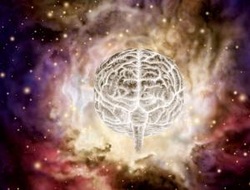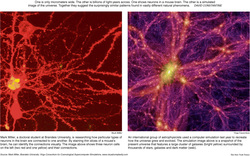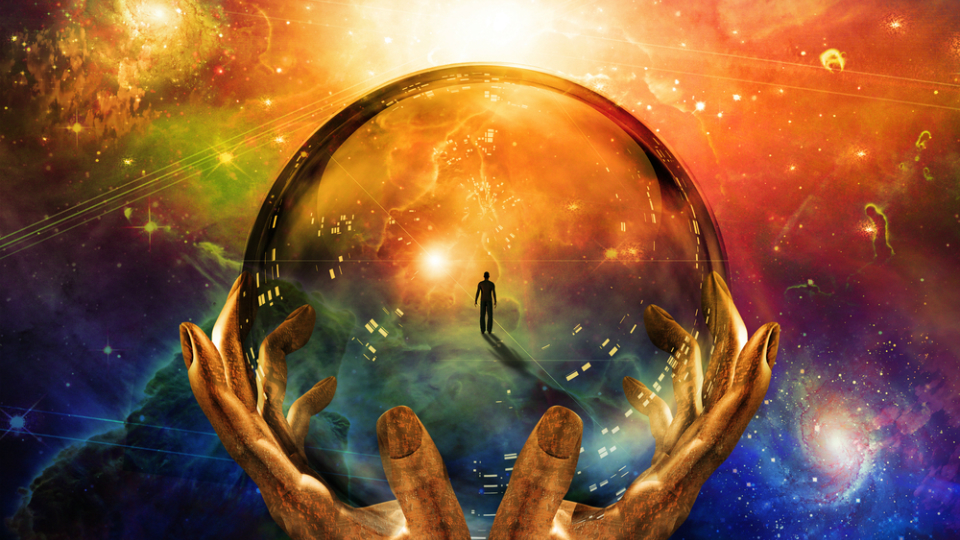
 In the true spirit of juxtaposed paradoxes, it is possible that this post - the one behind the picture on the left - should be here, and not there. But it is there, and it forms part of the second book which I'm writing at the moment, so I'm not going to move it again. But if you like this site because of its grounding in true science, you'll probably enjoy my adventure with Fred Hoyle, so please feel free to cross a boundary condition and have some fun with Maxwellian mystifications.
0 Comments
 This year has seen a surge of collaboration between physics and art, with Superposition in London, Morphogenesis in Bristol currently running (linked to pic), and CERN's in-house alliance of scientists and creatives. The Institute of Physics wants to expand horizons and broaden the scope of science in the public mind. Some scientists are asking, "At what cost?" The petit filous of challenging equations needing to be tamed in the wake of Higgs, the storm of excitement surrounding Dark Matter, and the whole issue of quantum field theory venturing into new territory leaves many a little nervous. With reason, perhaps. The Universe expands. While universal expansion continues unabated, and Dark Matter is heralded as the unseen culprit which keeps it moving, we have a lot of catching up to do. Popular scientists like Frank Close and John Gribbin brought the basis of quantum theory into public view with their marvellous array of books, but now we're up against a new kind of wall that is difficult to climb, because it isn't really there.  To the unscientific mind, unfettered by formulas and the chainmail of constraints, the new landscape looks very exciting. No wonder so many artisans are keen to join the ranks of intrepid explorers searching the cosmos for inspiration! Physicists, however, are uncertain. On the one hand, it seems ludicrous that Dark Matter should prove so elusive when clearly it's there and equally clearly, it makes up most of what is. On the other hand, it seems that any possible significant breakthrough will be achieved through unorthodox means. Traditionally, scientists are not keen on the unorthodox. All the great groundbreakers, from Newton to Feynman, came up against stiff opposition for their ideas. How are the creatives going to fare when everyone's back is to the wall, awaiting the onslaught of a Theory That Makes Sense? There is a legion of young scientists out there with minds unchained by old values, but one suspects they are being herded into the shed of constants even as we speak of them. General Relativity has it that E equals M+C squared, and this most famous of all equations puts a stranglehold on what may have to be realised - that energy and matter are not necessarily equivalent, and they don't necessarily have to marry the speed of light (the 'C' in Einstein's notorious formula).  Science is in two minds. One train of thought wants desperately to keep treading the traditional tracks in searching for new truths. Another wants to open itself to a different way of thinking, an instinctive approach to a problem new to us, but nothing new to the Universe from which it came. We only have to hark back to history to remind ourselves that the Dark Ages was a time of great knowledge, almost all of which has been destroyed, when alchemists were treading boards between science and philosophy and intuition was a welcome addition to the quiver of arrows hunting for answers. Let's prepare new ground with a new approach. Let's trust our gut, knowing as we do that the outdated methods of working through quandaries have spent their reserves and have no more fertility left to give. We are all party to this journey, and we all have much to gain. There is also a lot to lose, if we continue to be swayed by plentiful shekels of silver. Time itself is bending with the space that circles round it. Time for us to bend to its will, and stop baulking at the shining light of darknesses we cannot see. 2020 UPDATE While we're waiting for these New Minds to come out of their closets, some of them might already be discussing quantum mechanics in this Group: www.facebook.com/groups/quantumol : one reason being that Trolls are not allowed there.  Tonight I'm going to indulge in a flight of fancy, inspired by the fact that science fiction keeps on proving itself to be a reality it didn't know it was. I'm going to conjure a new particle. Well, if physicists can do it, why can't the rest of us? Enter the Petrino. My new particle has zero mass, like the photon, but it oscillates between states. Three states, these being high, low, and level. In level state, the Petrino is stable, and sits inert on its world line, going with the flow, completely disinterested in doing anything remotely energetic. In this state it can be influenced by other particles and forces, but won't do anything in response. In low state, it acquires a capacity to interact and will respond, if somewhat vaguely, to what is going on in its field of cause and effect. In high state, it does exactly as it likes and won't take no for an answer, becoming very influential and much more likely to affect than to be affected by. Like the photon, it can be transformed into many material conditions due to its incredible flexibility. I'd give it an equation, but I don't do equations. If someone else wants to, be my guest. Send it to me - I'd love to see what the formula looks like. The Petrino's relationship with gravity is flexible too, so you shouldn't have any infinities to worry about. Its relationship with gravity accords to its energy, not to mass, because it doesn't have any. Petrinos don't need mass - matter would just get in the way of its freedom to do as it wishes. The reason this particle insists on existing has nothing to do with mathematics, but everything to do with logic. Here we have a particle which doesn't conform to the usual standards and wants to be what it is without having to subscribe to anyone's idea of what a thing should be. Petrinos are not subject to Planck's Constant because they have no mass to worry about. They don't have any truck with symmetric limitation because they exist in whatever state they choose and whether they have an anti-particle is rather a moment-by-moment decision. They are bound by the rules of the Uncertainty Principle as is everything everywhere in every conceivable Universe and they absolutely love being completely invisible.  The Petrino is my prime candidate for Dark Matter. Sister force to the Petrino - Dark Energy, from which it gains low or high states of existence. In level state, it is inert, subscribing to the second law of thermodynamics it'll obligingly be as entropic as you like. In low or high states, however, it is a force to be reckoned with in its own right and its indivisible duality with energy drives the expansion of the Universe. There doesn't have to be an increasing number of Petrinos to fill an expanding Universe, they simply change their taste according to the circumstances of the time. Now, all you physicists out there are going to sneer and make plurting noises and think there is nothing vaguely intelligent to think about this ridiculous post. But one day, mark my words, there will be a particle found which fits the above model. Maybe not exactly to the letter (predictive precision flouts the Uncertainty Principle and flouting that isn't allowed). But more or less, within a reasonable parameter of solid identification, a particle fitting the Petrino's description will come along. Of its own accord. You don't need to do anything. You don't even need to look for it. Because the Petrino knows when the time is right, and will decide according to its own processing when to make its presence known.
Possibly in Bflat. When it does, I want your word on just one thing. The Petrino belongs to me.  Dark Matter (and by default, Dark Energy) have appeared on the scientific scene relatively recently, and these Dark Materials are quite unique in the timeframe of this exploratory era. If we consider science to have begun to dig deep into the Universe around the age of Socrates, that's only 2,500 years ago. As exponential curves tend to follow a trend, the last few hundred years has seen the steepest climb in knowledge-gathering, spearheaded at the start of the last century by Einstein and those around him at the time. The Universe is estimated to be 13 to 14 billion years old, so the disparity between a few thousand years and so many billion should illuminate the quantum nature of our personal time frame. Our size, in relative terms, is also much closer to quantum elements than to the bigger picture we now see thanks to Hubble-like technology. We tend to think of ourselves as the centre of the Universe in psychological terms even if we've outgrown the physical analogy. Intelligent creatures busily ferreting out the meaning of Life, the Universe and Everything while all the space around us appears to be empty.  Empty it was, to all intents and purposes, until Dark Matter came along. Hinting at itself through lensing techniques and laying claim to a vast percentage of the Universe, but refusing to reveal its true nature, you'll find through Google that Dark Matter wasn't discovered by anyone, it's "purely theoretical." Unlike Heisenberg's Uncertainty Principle, Planck's Constant, Bohr's Atom and Einstein's Relativity, Dark Matter is an entity in its own right that not only refuses to be identified, but refuses to allow anyone to claim its identity, either. If science sits up and takes notice of the bald facts beyond the surface equations, it'll find itself looking in the right places. At the moment, the maths is driving money into huge particle experiments that are drawing blanks left right and centre. All you need to do, if you're a scientist, is meditate. Seriously meditate. I mean, what harm can it do, to give yourself some quiet time away from the damn figures and drift into the landscape of your sub-subconscious mind? You have the keys, the Universe gave them to you. All the necessary tools are there at your disposal. You'll need the math to make sense of what you find out there. But relying on formulas to point the way is like looking for water with a compass.  Stop searching notepads for nourishment. You want to find Dark Matter and learn what secrets it holds? They won't be given lightly. There in the outer reaches of the Universe lie the gems of information we all want to be found. There's a possibility it will save the Earth from an unfortunate but apparently inevitable doom. Want to escape Fermi's Paradox? Maybe even be among the first civilizations to do it? Look to Stargate. All the Ancient races have just one thing in common. Except the ones who stole, and claimed themselves to be gods. The Goa'uld missed out on the one thing advancement shares with the advanced.  In creating strategies for the Universe we live in, scientists come up with some pretty strange things. They argue about the shape of the Universe - whether it's flat, or not, while everything in it appears generally to be round. A supporting argument for a flat Universe is that the topography is curled up, into a saddle shape, or a 'closed system' like a tube. Then there are the many extra dimensions which have to exist in order for the whole universal network of principles and parameters to hold weight, and these also are said to be curled up, into infinitesimally small strings, or loops, which again are often likened to tubes - see diagram linked here. What's striking about all these analogies comes sharply into focus when we consider the topography of an ordinary brain.  This image is from New Scientist, illustrating the concept of Boltzmann Brains (BB). The BB theory arises from the possibility of conscious entities arising out of universal chaos, melding themselves into the entropy of the Universe and then eventually dissipating back into the cosmological soup once more. I've picked this article to establish the background of BB in science as it's fairly free of jargon and gets to the point. Well, brains are composed essentially of hundreds on hundreds of curled-up tubes interlocking to form the brain structure we're familiar with. Can it really be a coincidence that the structure of the standard brain (which is pretty much universal across all species) has such fundamental links with the topography of the Universe and the dimensions intersecting it?  I don't think so. I have a great deal of suspicion about coincidence and a strong certainty that it actually doesn't exist. Synchronicity is a word much used in scientific circles, whereas coincidence is not. We have many synchronous events and principles weaving the warp and weft of what the Universe is supposed to be. But we've clearly come unstuck when it comes to Dark Matter, because Dark Matter and Energy are clearly outside our current remit. The latest in highly expensive experiments seeking Dark Matter has drawn a highly embarrassing blank.  So, back to the drawing board, given that the LUX experiment linked above is concentrating on WIMPs (weakly interacting massive particles) as the primary Dark Matter candidate. There are several candidates to choose from - all of them have their champions. One of these is a shadow photon, a reversible light particle in other words. Another is a sterile neutrino - and as you'll see from the article linked, there's a very loose interpretation as to what form that would take. Truth is, nobody knows anything about Dark Matter and Energy except in terms of abundance. And it's out there. So far, nobody has dared to suggest that it might be in here, too. This picture is from a Daily Mail article published in 2011 (linked behind the image) which explores the WIMP candidacy - so clearly, we're stirring the same soup as we were stirring many years ago, and it's unsurprising that the trail on the plate has gone a little bit cold by now.  The connection is blatantly obvious, but it's not new. The images here, of a neural network alongside the Dark Matter impression, are from an article (linked behind) in the New York Times, referencing the strange connection between "vastly different natural phenomena" which perhaps aren't so vastly different after all. If Dark is what the universal brain turns out to be, and Dark is the essence of the corruption and blatant destruction of environments across the length and breadth of our beautiful planet, then perhaps the depth of links between our subconscious fear of the Dark and the mind-set we have to contend with is not so surprising after all. We'd like to think we're above all that. We like to believe that we're sentient, empathic and appreciative enough to put brakes on the barbaric slaughter of species all over the world and the brazen butchery of our fragile ecosystems.
Me? I'm betting my lifetime will see things get a lot worse. Maybe there is no getting better to look forward to. Maybe Dark Matter is so powerful that it can effortlessly crush the illumination promised by Light and will con us into believing all kinds of propagandist junk for long enough to assure the destruction of the world we live on. Maybe Dark Matter is well versed in this tactic, as Fermi's Paradox might possibly suggest. The article linked here breaks down to the following extract: "In general, solutions to Fermi's paradox come down to either 1) life is difficult to start and evolve (either hard for the process or hard to find the right conditions) or 2) advanced civilizations destroy themselves on short timescales. In other words, this is an important problem to solve in the hope that it is 1 and not 2." |
AuthorKathy Ratcliffe has studied quantum mechanics since 1997 in a life surrounded by birds and animals, She's a metaphysicist, if such a thing exists, looking as we all are for the inevitable bridge between humanity and particle physics. Archives
April 2023
Categories |

 RSS Feed
RSS Feed
